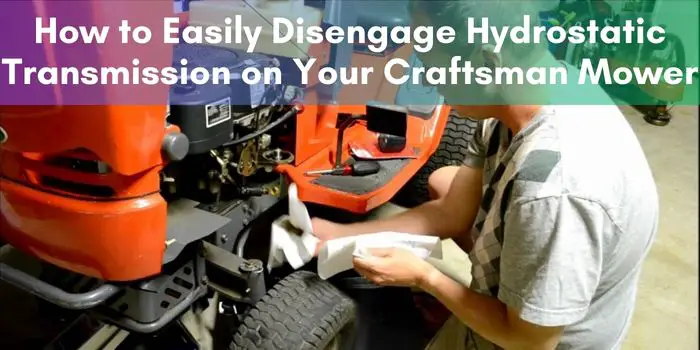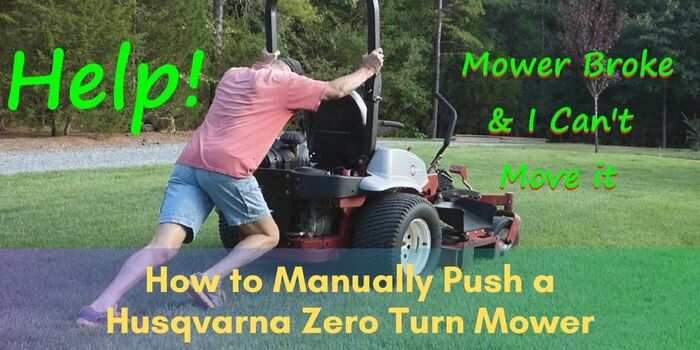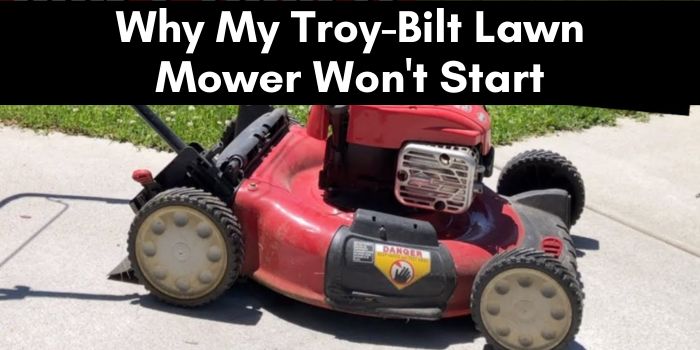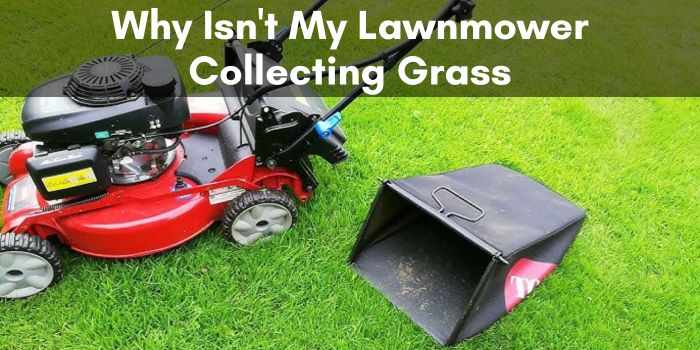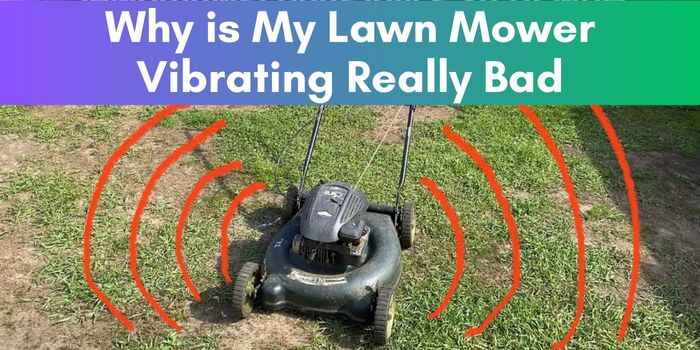How to Easily Disengage Hydrostatic Transmission on Your Craftsman Mower
To disengage the hydrostatic transmission on a Craftsman, locate the lever or switch that controls the transmission and move it to the disengaged position. Take caution to follow the manufacturer’s instructions for your specific model.
Avoid sudden movements or jerks to prevent damage to the transmission system. Craftsman lawn mowers and other outdoor power equipment often feature hydrostatic transmission, which provides smooth and effortless operation. However, there may be times when you need to disengage the transmission, such as when towing the equipment or moving it manually.
In this guide, we will discuss the steps to disengage the hydrostatic transmission on a Craftsman, ensuring you can do so safely and without causing harm to the equipment.
Understanding Hydrostatic Transmission
Hydrostatic transmission is a type of power transmission system that hydraulic fluids to transfer power from the engine to the wheels.
This technology is commonly found in Craftsman mowers and is considered an upgrade from traditional manual transmission systems.
By understanding how hydrostatic transmission works and the benefits it offers, you can make the most out of your Craftsman mower and ensure its optimal performance.
How does hydrostatic transmission work?
At the heart of the system lies a magic duo: the pump and the motor. Both utilize hydraulic fluid to transmit power from the engine to the wheels. Here’s a breakdown of their roles:
- The Pump: Powered by the engine, the pump acts like a fluid heart. It constantly pushes hydraulic fluid through the system. Imagine a small, spinning wheel with pistons that compress the fluid as they rotate. This creates high pressure.
- The Swash Plate: This angled plate sits within the pump and controls the flow of the fluid. By tilting the swash plate, we can change the volume of fluid pumped with each rotation. Think of it as a volume control knob for the hydraulic fluid.
- The Motor: This component utilizes the pressurized fluid to drive the wheels. Here, another set of pistons converts the hydraulic pressure back into rotary motion. The amount of tilt in the swash plate on the motor’s side determines the direction and speed of the wheels.
Putting it All Together: From Pedal to Wheel
Here’s how this transmission to smooth operation:
- Pressing the Pedal: As you depress the forward pedal on your Craftsman mower, you tilt the swash plate in the pump. This increases the volume of fluid pumped and sends it towards the motor.
- The Motor Responds: The pressurized fluid pushes against the pistons in the motor, causing them to rotate and drive the wheels forward. The greater the pedal depression, the more the swash plate tilts, resulting in faster wheel rotation and increased mowing speed.
- Steering with Ease: Since the hydrostatic transmission controls speed infinitely, you can navigate around obstacles and curves with unmatched precision.
Benefits of using hydrostatic transmission on Craftsman mowers
There are several benefits of using hydrostatic transmission on Craftsman mowers that make it a reliable choice for homeowners and professionals alike:
Effortless control
Imagine being able to control the speed of your mower with just a single foot pedal. Unlike gear-shifting transmissions that require stopping and clutching, hydrostatic transmissions allow for seamless control. Adjust your speed on the fly, whether you’re navigating tight corners or cruising along open stretches of lawn.
Smooth operation
Hydrostatic transmissions rely on fluid power, resulting in a much smoother ride compared to jerky gear changes. This can be especially beneficial on uneven terrain, where a gear-driven mower might constantly shift, interrupting your mowing flow.
Maneuverability magic
Say goodbye to the frustration of wrestling your mower around obstacles. The precise control of a hydrostatic transmission allows for effortless maneuvering around flower beds, trees, and other yard features. This is a game-changer for those with intricate lawn layouts.
Built to last
Hydrostatic transmissions are known for their durability. With proper maintenance, they can last for years, saving you the hassle and expense of frequent mower repairs.
A wider range of choice
Craftsman offers a variety of hydrostatic mower models to suit your needs and budget. Whether you have a small yard or a sprawling estate, there’s a Craftsman hydrostatic mower that can handle the job with ease.
Mowing shouldn’t be a chore
With a Craftsman mower equipped with a hydrostatic transmission, you can experience a whole new level of control, comfort, and efficiency. So ditch the frustration and rediscover the joy of keeping your lawn looking its best.
Signs Your Hydrostatic Transmission Needs Disengagement
Your Craftsman mower with a hydrostatic transmission is a marvel of lawn care engineering. But even the best machines need attention sometimes. How do you know when your trusty mower’s magic might be running out?
Here are some telltale signs that your Craftsman mower’s hydrostatic transmission needs disengagement:
The Runaway
This is a scary one. If your mower starts to take off on its own, even with the pedal disengaged, it’s a clear sign of internal trouble. Disengagement is crucial to stop the mower safely and avoid any potential accidents.
Jerky Movements
The hallmark smoothness of a hydrostatic transmission is gone if your mower bucks and jerks while moving. This indicates internal issues that prevent proper fluid flow, making disengagement necessary to prevent further damage.
Loss of Power
Is your once-powerful mower struggling to maintain speed, even on flat terrain? This could be due to failing internal components within the transmission. Disengaging the transmission allows for safe maneuvering of the mower to a repair shop.
Strange Noises
New grinding, whining, or clunking noises coming from the mower are never a good sign. These noises might indicate internal wear and tear within the transmission. Disengage the transmission to prevent further damage and allow for proper diagnosis.
Fluid Leaks
Hydrostatic transmissions rely on pressurized fluid to function. Leaks are a serious issue, indicating potential seal failure. Disengaging the transmission helps prevent further fluid loss and possible environmental damage.
Burning Smell
Burning rubber or oil smells emanating from the mower are a red flag. This could indicate overheating or excessive wear within the transmission. Disengage immediately to stop the mower and prevent a fire hazard.
Unusual Noises or Vibrations
One of the telltale signs that your hydrostatic transmission requires disengagement is the presence of unusual noises or vibrations during operation. If you notice a grinding, whining, or knocking sound coming from the transmission, it could indicate internal damage or wear.
Similarly, if you feel excessive vibrations while mowing, it may suggest a problem with the transmission. Disengaging the hydrostatic transmission allows you to inspect and address the issue before it worsens.
Difficulty in Changing Gears
Another indication that your hydrostatic transmission needs disengagement is difficulty in changing gears. If you find it challenging to shift between forward and reverse or experience jerky movements when doing so, it could be a sign of a transmission problem.
Disengaging the hydrostatic transmission allows you to examine the gears, linkages, and fluid levels to identify any issues causing the difficulty.
Loss of Power or Speed
When your hydrostatic transmission starts losing power or speed during operation, it is a clear signal that disengagement is needed. If your mower struggles to climb inclines that it previously handled with ease or if your mowing speed decreases significantly, it indicates a potential problem with the transmission.
By disengaging the hydrostatic transmission, you can perform a thorough inspection, including checking the fluid level and inspecting the drive belt, ensuring that you can restore the power and speed of your mower.
Remember
Disengaging the hydrostatic transmission allows you to move the mower manually for short distances. However, it’s not a fix. If you experience any of these signs, it’s crucial to consult a qualified technician for proper diagnosis and repair of your Craftsman mower’s hydrostatic transmission.
Preparing Your Craftsman Mower For Disengagement
Disengaging the hydrostatic transmission on your Craftsman mower is an essential step for performing maintenance or repairs.
Whether you’re replacing a belt or inspecting the pulleys, it’s important to follow proper procedures to ensure your safety and prevent any damage to the mower.
In this guide, we will walk you through the necessary steps to disengage the hydrostatic transmission on your Craftsman mower. Let’s start by preparing your mower for disengagement.
Safety Precautions
Before you begin working on your Craftsman mower, it’s crucial to prioritize safety. Taking the necessary precautions will reduce the risk of accidents and injuries.
Here are some safety measures to keep in mind:
- Always wear protective gear, including safety glasses, gloves, and closed-toe shoes.
- Park the mower on a level surface to ensure stability.
- Engage the parking brake and turn off the ignition to avoid accidental starts.
- Wait for the engine to cool down before starting any work.
Identifying the Disengagement Components
Understanding the various components involved in the disengagement process is essential. This knowledge will help you locate and handle the specific parts without any confusion.
Here are the key disengagement components:
| Component | Function |
|---|---|
| Deck Lever | Controls the engagement and disengagement of the mower deck. |
| Drive Belt | Connects the engine pulley to the transmission pulley, driving the mower’s movement. |
| Transaxle | Houses the hydrostatic transmission and regulates power delivery to the wheels. |
Required Tools and Equipment
Having the right tools and equipment ready will ensure a smooth and efficient disengagement process.
Here’s a list of the tools you’ll need:
- Socket set with various sizes
- Adjustable wrench
- Screwdriver set
- Jack stand
- Hydraulic jack
- Torque wrench
It’s important to have these tools readily available to save time and avoid interruptions during the process. Once you have gathered everything you need, you’ll be better prepared to disengage the hydrostatic transmission on your Craftsman mower.
Step-By-Step Guide To Disengaging Hydrostatic Transmission
Welcome to our step-by-step guide on how to disengage the hydrostatic transmission on your Craftsman mower.
Whether you’re experiencing issues with your mower or simply need to access the transmission components for maintenance or repair, this guide will walk you through the process efficiently and safely.
Lifting the Mower Safely
Before we dive into the disengagement process, it is essential to prioritize safety. Lifting the mower correctly ensures stability and reduces the risk of injury.
Follow these steps to lift your Craftsman mower safely:
- Ensure the mower is on a flat, level surface.
- Engage the parking brake and remove the ignition key to prevent accidental start-ups.
- Locate a sturdy jack or lift that can support the weight of the mower. Position it securely underneath the front or rear axle.
- Slowly and carefully lift the mower until the wheels are off the ground. Double-check that it is stable and securely positioned before proceeding.
Accessing the Transmission Components
Now that you’ve safely lifted the mower, it’s time to gain access to the transmission components.
Follow these steps:
- Locate the protective cover or shroud that surrounds the transmission. This cover may vary based on the model of your Craftsman mower.
- Using a suitable tool, such as a screwdriver or wrench, remove the fasteners holding the cover in place. Set them aside in a safe location for later reassembly.
- Gently lift off the cover, exposing the hydrostatic transmission and its associated components.
- Take a moment to inspect the transmission area, ensuring there are no obstructions or excessive debris that may hinder disengagement or reassembly later on.
Releasing the Tension on the Drive Belt
Finally, we’ll walk you through the process of releasing tension on the drive belt, which is crucial for disengaging the hydrostatic transmission.
Follow these steps:
- Locate the drive belt on your Craftsman mower. It should be connected to the engine pulley and the transmission pulley.
- Identify the tensioner mechanism, which is responsible for adjusting the drive belt’s tension.
- Using the appropriate tool, such as a wrench or socket, rotate the tensioner mechanism counterclockwise to relieve tension on the drive belt.
- Once the tension is released, carefully slide the drive belt off the transmission pulley, ensuring it does not get caught on any surrounding components.
Remember to exercise caution throughout the process and take your time to ensure each step is performed accurately.
Important Tips For A Smooth Disengagement Process
Properly disengaging the hydrostatic transmission on your Craftsman lawn mower is a crucial step in maintaining its performance and longevity.
Lubricating the transmission components
An essential step in disengaging a hydrostatic transmission is to ensure that all the components are properly lubricated. Lubrication helps reduce friction and wear, allowing the transmission to function optimally.
It is recommended to apply a high-quality lubricant to the moving parts of the transmission, such as the drive shaft and input/output splines.
Inspecting and cleaning the drive belt
The drive belt plays a key role in the operation of the hydrostatic transmission. Over time, it can become worn or damaged, affecting the disengagement process.
Regularly inspecting and cleaning the drive belt is important to prevent any debris or build-up that may hinder its performance.
Start by visually inspecting the drive belt for any signs of wear, cracks, or fraying. If you notice any damage, it is recommended to replace the belt with a new one.
Additionally, clean the belt using a mild detergent and water solution to remove any dirt or debris. Ensure that the belt is dry before reinstallation to prevent slippage.
Maintaining proper belt tension
Proper belt tension is crucial for the smooth operation of the hydrostatic transmission. If the belt is either too loose or too tight, it can affect the disengagement process and lead to premature wear. Regularly check the belt tension and make adjustments as necessary.
To check the belt tension, refer to your Craftsman mower’s manual for specific instructions. Generally, there should be a recommended deflection measurement for the belt.
Use a tension gauge or a ruler to measure the deflection and make adjustments accordingly. Ensure that the belt is not too tight to prevent unnecessary stress on the transmission components.
Regular maintenance and care will not only enhance its performance but also extend its lifespan, allowing you to enjoy a well-maintained lawn for years to come.
Troubleshooting Common Issues During Disengagement
Disengaging the hydrostatic transmission on your Craftsman mower can sometimes be a frustrating process, especially when you encounter common issues that hinder the disengagement.
In this section, we will discuss some of these issues and provide troubleshooting tips to help you get your transmission disengaged smoothly.
Drive Belt Slipping or Breaking
The drive belt plays a crucial role in the disengagement of the hydrostatic transmission. If you notice that the drive belt is slipping or has broken, it can cause difficulties in disengaging the transmission.
Here are some troubleshooting tips:
- Inspect the drive belt for any signs of wear or damage. Look for cracks, fraying, or excessive stretching.
- If the drive belt is worn or damaged, replace it with a new one. Make sure to consult your Craftsman mower’s manual for the correct belt size and installation instructions.
- Check the tension of the drive belt. It should be properly tensioned to ensure proper disengagement of the transmission. Adjust the tension if necessary.
- Ensure that the drive belt is properly aligned and installed on the pulleys. Incorrect alignment or installation can cause slipping or breakage.
Transmission Not Fully Disengaging
If your hydrostatic transmission is not fully disengaging, it can result in the mower still moving when the drive pedal is released.
Here are some troubleshooting tips to address this issue:
- Check the condition of the transmission control linkage. Make sure it is not loose or worn out. Tighten or replace the linkage if necessary.
- Inspect the transmission release mechanism. It may be stuck or obstructed, preventing complete disengagement. Clean or lubricate the mechanism to resolve the issue.
- Ensure that the transmission control lever or pedal is fully released when attempting to disengage the transmission. Sometimes, a partially engaged lever can cause incomplete disengagement.
Difficulty in Re-engaging the Transmission
Re-engaging the hydrostatic transmission can also pose its own set of challenges. If you are experiencing difficulties in re-engaging the transmission, you can try the following troubleshooting tips:
- Inspect the transmission control linkage and make sure it is properly connected and functioning. Replace any worn or damaged parts.
- Check the transmission release mechanism and ensure it is clean and free from obstructions. Lubricate if necessary.
- Verify that the drive belt is properly installed and tensioned. Adjust or replace the belt if needed.
Remember to consult your mower’s manual for specific instructions and always prioritize safety when working with the transmission.
Regular Maintenance And Care For Your Craftsman Mower Hydrostatic Transmission
The hydrostatic transmission in your Craftsman mower is a crucial component that allows for smooth and efficient operation.
To ensure that your mower continues to perform at its best, it is essential to regularly maintain and care for the hydrostatic transmission.
In these simple steps, you can extend the lifespan of your transmission and enjoy a reliable and powerful mowing experience.
Checking Fluid Levels
One of the most important aspects of maintaining your Craftsman mower’s hydrostatic transmission is regularly checking the fluid levels.
Low fluid levels can cause excessive heat and premature wear, leading to poor performance and potential costly repairs.
To check the fluid levels:
- Start by parking your mower on a flat surface and engaging the parking brake.
- Locate the transmission dipstick, usually located near the rear of the mower.
- Remove the dipstick, wipe it clean, and reinsert it fully.
- Remove the dipstick again and check the fluid level. It should be between the “Full” and “Add” marks on the dipstick.
- If the fluid level is low, add the recommended fluid as per the manufacturer’s instructions.
Replacing Transmission Fluid and Filters
Regularly replacing the transmission fluid and filters is another crucial step in maintaining your Craftsman mower’s hydrostatic transmission.
Over time, the fluid can become contaminated with debris and lose its effectiveness, affecting the overall performance of the transmission.
Here’s how you can replace the fluid and filters:
- Refer to your Craftsman mower’s manual to identify the specific type of fluid and filters required.
- Position a drain pan under the transmission to collect the old fluid.
- Remove the drain plug to drain the old fluid completely into the drain pan.
- Replace the transmission filter by removing the old filter and installing a new one.
- Refill the transmission with the recommended fluid, ensuring it reaches the correct level on the dipstick.
Inspecting and Adjusting Drive Belt Tension
The drive belt tension plays a crucial role in the smooth operation of your Craftsman mower’s hydrostatic transmission. Over time, the drive belt can stretch, resulting in reduced performance and potential slipping.
To inspect and adjust the drive belt tension:
- Start by disconnecting the spark plug to prevent accidental engine starts.
- Locate the drive belt on your mower. It is typically connected to the transmission pulley and the engine pulley.
- Carefully inspect the belt for any signs of wear, cracks, or fraying. Replace if necessary.
- If the belt tension is too loose, locate the tension adjustment mechanism (e.g., a tensioning bolt or pulley) and adjust it to achieve the proper tension.
- Ensure the drive belt is properly aligned and secure before reconnecting the spark plug and testing the mower.
Maintaining and caring for your Craftsman mower’s hydrostatic transmission is vital for ensuring optimal performance and durability.
Extending The Lifespan Of Your Hydrostatic Transmission
The hydrostatic transmission in your Craftsman machine plays a crucial role in ensuring smooth and efficient movement.
As a responsible owner, it is essential to take steps to maintain and extend the lifespan of your hydrostatic transmission.
Avoiding Excessive Loads and Overheating
One crucial way to extend the lifespan of your hydrostatic transmission is to prevent excessive loads that can put strain on the system.
Avoid overweighting your machine or overloading it with heavy equipment or materials. Always check the manufacturer’s guidelines and adhere to the recommended weight limits.
Additionally, overheating can cause significant damage to your transmission. To prevent overheating, ensure that the cooling system is functioning correctly.
Keep the cooling fins clean and clear of debris, as this can obstruct proper airflow. Regularly monitor the temperature gauge during operation and take breaks as necessary to prevent excessive heat buildup.
Proper Cleaning and Storage Practices
Cleaning your hydrostatic transmission regularly is essential to maintain its performance and extend its lifespan.
After each use, remove any dirt, mud, or debris that may have accumulated on the transmission and surrounding parts. Pay particular attention to the cooling fins, as these can easily get clogged with debris.
When storing your Craftsman machine, ensure that it is in a clean and dry environment. Moisture and dirt can contribute to corrosion and damage, so it’s crucial to keep the transmission protected. Consider using a cover to shield the machine from dust and potential water exposure.
Regular Professional Servicing Recommendations
While regular cleaning and maintenance can significantly extend the lifespan of your hydrostatic transmission, it is also essential to schedule regular professional servicing.
A trained technician can inspect and assess the condition of your transmission, identifying any potential issues before they escalate into major problems.
During professional servicing, the technician can perform tasks such as changing the transmission fluid, inspecting belts, and checking for any leaks or signs of wear and tear. By staying on top of regular servicing, you can address any small issues promptly and prevent them from causing further damage to your hydrostatic transmission.
Frequently Asked Questions
How Do You Manually Move A Craftsman Riding Lawn Mower?
To manually move a Craftsman riding lawn mower, disengage the transmission by setting the mower to neutral. Unlock the parking brake and carefully push or pull the mower to the desired location. Make sure to turn off the engine and take necessary safety precautions.
How Do You Disengage Hydrostatic?
To disengage hydrostatic, release the pressure by turning off the control. Then, shift the transmission into neutral or manual mode to disengage the hydrostatic system. Finally, engage the parking brake for safety.
How Do You Disengage A Transmission On A Riding Lawn Mower?
To disengage the transmission on a riding lawn mower, locate the lever or pedal labeled “transmission” or “drive. ” Move the lever to the neutral position or release the pedal. This will disconnect the mower’s transmission, allowing it to roll freely.
Can You Push A Hydrostatic Mower?
Yes, a hydrostatic mower can be pushed.
Conclusion
Properly disengaging the hydrostatic transmission on your Craftsman machine is crucial for maintaining its optimal performance. By following the step-by-step instructions provided in this blog post, you can ensure a smooth disengagement process. Remember to prioritize safety and refer to your owner’s manual for specific model instructions.
By disengaging correctly, you’ll be able to handle any maintenance or repairs with ease, ensuring the longevity of your Craftsman equipment. Keep enjoying your outdoor tasks hassle-free!

